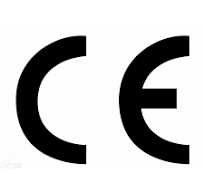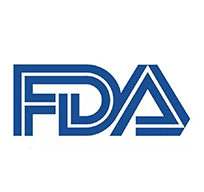Why Microdermabrasion is Essential for Your Skincare Routine
2025-03-15
Why Microdermabrasion is Essential for Your Skincare Routine
Understanding Microdermabrasion: A Comprehensive Overview
Microdermabrasion is a non-invasive skincare procedure that utilizes tiny crystals or a diamond-tipped wand to exfoliate the skin's outer layer. This advanced technique promotes a rejuvenating effect by removing dead skin cells, revealing a fresh layer of skin underneath. The process not only enhances skin texture but also stimulates collagen production, leading to firmer and more youthful-looking skin.
The Benefits of Microdermabrasion
Microdermabrasion offers a myriad of benefits that make it an essential component of any skincare routine.
1. Improved Skin Texture and Tone
One of the primary advantages of microdermabrasion is its ability to refine skin texture. By removing the superficial layer of dead skin, this treatment helps to smooth out uneven surfaces and minimize the appearance of fine lines and wrinkles. In turn, this leads to a more even skin tone, addressing issues such as hyperpigmentation and sun damage.
2. Diminished Appearance of Fine Lines and Wrinkles
As we age, our skin naturally loses elasticity and becomes more prone to fine lines and wrinkles. Microdermabrasion helps to stimulate collagen and elastin production, essential proteins that maintain skin firmness and elasticity. Regular treatments can effectively reduce the appearance of these signs of aging, resulting in a youthful glow.
3. Enhanced Absorption of Skincare Products
Exfoliation through microdermabrasion allows for better absorption of skincare products. With the outer layer of dead skin removed, serums and moisturizers penetrate deeper into the skin, maximizing their effectiveness. This means that your skincare products will work more efficiently, providing better results.
4. Reduction of Acne Scars and Pores
Microdermabrasion is particularly beneficial for those with acne-prone skin or existing acne scars. The exfoliation process helps to unclog pores, reducing the likelihood of breakouts. Additionally, it can diminish the appearance of acne scars over time, leading to a clearer complexion.
5. Safe for All Skin Types
One of the standout features of microdermabrasion is its versatility. This treatment is safe for all skin types, including sensitive skin. Unlike more aggressive procedures, microdermabrasion is gentle and can be tailored to meet individual skin care needs, making it accessible to a wide range of individuals.
Microdermabrasion Techniques: What to Expect
When considering microdermabrasion, understanding the techniques involved can help set expectations for the treatment.
1. Crystal Microdermabrasion
Crystal microdermabrasion involves the use of fine crystals, typically aluminum oxide, to exfoliate the skin. During the procedure, a handheld device sprays these crystals onto the skin while simultaneously suctioning them away, removing dead skin cells in the process. This technique is effective but may cause slight redness immediately afterward.
2. Diamond Microdermabrasion
Diamond microdermabrasion utilizes a diamond-tipped wand to gently buff away the outer layer of skin. This method does not involve the use of crystals, making it a more controlled and less messy option. It is often preferred for its precision and the reduced risk of irritation.
3. At-Home Microdermabrasion Kits
In addition to professional treatments, there are various at-home microdermabrasion kits available. These products typically include exfoliating creams or devices designed to mimic the effects of professional treatments. While they may not offer the same level of results as in-office procedures, they can still be beneficial for maintaining skin health between sessions.
Who Should Consider Microdermabrasion?
Microdermabrasion is suitable for a broad audience, but certain individuals may particularly benefit from this treatment.
1. Those with Dull or Uneven Skin
Individuals experiencing dull, lackluster skin or uneven texture can greatly benefit from microdermabrasion. The exfoliation process reveals fresh skin, enhancing radiance and overall complexion.
2. Acne-Prone Skin Types
For those struggling with acne, microdermabrasion can be a game-changer. By unclogging pores and removing dead skin, it helps to reduce breakouts and improve skin clarity. However, it is crucial to consult with a dermatologist before undergoing treatment.
3. Aging Skin
As skin ages, it becomes necessary to adopt treatments that promote renewal and elasticity. Microdermabrasion can effectively address fine lines and signs of aging, making it a desirable option for mature skin.
4. Individuals with Scarring
Microdermabrasion can help diminish the appearance of various types of scars, particularly acne scars. By promoting cell turnover and collagen production, it assists in the healing process and improves overall skin texture.
How Often Should You Get Microdermabrasion?
Determining the frequency of microdermabrasion treatments is essential for optimal results. While individual needs may vary, the following guidelines can help:
1. Initial Treatment Phase
For those beginning microdermabrasion, a series of treatments—typically 4 to 6 sessions spaced 2 to 4 weeks apart—can help achieve significant results. This phase allows the skin to adapt and respond to the treatment effectively.
2. Maintenance Phase
Once the initial treatment phase is complete, transitioning to a maintenance schedule is recommended. This usually entails receiving treatments every 1 to 3 months, depending on individual skin needs and goals.
Preparing for Your Microdermabrasion Treatment
Proper preparation ensures you maximize the benefits of microdermabrasion.
1. Consultation with a Professional
Before undergoing microdermabrasion, consult with a dermatologist or licensed skincare professional. They can assess your skin type, health history, and specific concerns to determine if microdermabrasion is suitable for you.
2. Skincare Regimen Adjustment
In the days leading up to your treatment, consider adjusting your skincare regimen. Avoid harsh exfoliants, retinoids, or any products that may irritate the skin. This will help prepare your skin for a successful treatment.
Post-Treatment Care for Optimal Results
After microdermabrasion, following proper post-treatment care is critical for achieving the best results.
1. Hydration is Key
Keeping the skin hydrated is essential after treatment. Use a gentle, hydrating moisturizer to replenish moisture and support the skin's healing process.
2. Sun Protection
Post-treatment, the skin may be more sensitive to sunlight. It is crucial to apply sunscreen with a broad-spectrum SPF of at least 30 daily. This protects the newly exposed skin and helps prevent hyperpigmentation.
Common Myths About Microdermabrasion
Understanding the truth behind common misconceptions can help demystify microdermabrasion.
1. Myth: Microdermabrasion Is Painful
Many individuals fear that microdermabrasion may be painful. However, most people report only mild discomfort, akin to a light scratching sensation.
2. Myth: Results Are Immediate and Permanent
While some individuals notice instant improvements in their skin's appearance, microdermabrasion results are not permanent. Regular maintenance treatments are necessary to sustain the benefits.
3. Myth: It's Only for Aging Skin
Microdermabrasion is not solely for aging skin; it is beneficial for anyone looking to improve their skin's texture and tone, regardless of age.
Frequently Asked Questions (FAQs)
1. Is microdermabrasion safe for sensitive skin?
Yes, microdermabrasion is generally safe for sensitive skin, but it's essential to consult with a professional to tailor the treatment to your skin's specific needs.
2. How long does a microdermabrasion session take?
Typically, a session lasts between 30 to 60 minutes, depending on the area being treated and the specific technique used.
3. Can I wear makeup after microdermabrasion?
It is advisable to wait at least 24 hours before applying makeup post-treatment to allow the skin to recover.
4. Will there be any downtime after treatment?
Most people experience minimal downtime; however, some redness and sensitivity may occur. This usually subsides within a few hours to a day.
5. Can I have microdermabrasion if I have active acne?
While microdermabrasion can be beneficial for acne-prone skin, it is best to avoid treatment during active breakouts to prevent irritation. Consult with a dermatologist for personalized advice.
Conclusion
Incorporating microdermabrasion into your skincare routine can yield exceptional benefits, from improved texture and tone to enhanced absorption of products. By understanding the techniques, preparing adequately, and following post-treatment care, you can maximize the results of this powerful skin treatment. Whether you are looking to address specific skin concerns or simply maintain a healthy, vibrant complexion, microdermabrasion offers a versatile solution that can fit seamlessly into any skincare regimen. Embrace the journey to radiant skin and make microdermabrasion an essential part of your beauty routine today!









